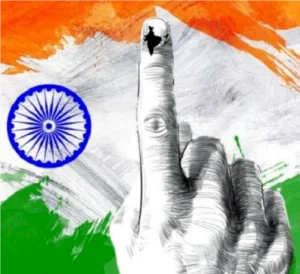
Introduction : “One Nation, One Election”
- The concept of “One Nation, One Election” has ignited intense debates within the Indian political landscape.
- Proponents argue that synchronizing Lok Sabha and state Assembly elections could potentially streamline the electoral process, leading to enhanced governance efficiency and reduced expenditure.
Proposed Roadmap:
- A high-level committee, led by former President Ram Nath Kovind, has laid out a comprehensive roadmap for the implementation of simultaneous elections.
- According to this plan, the process would kick off after the conclusion of the 2024 Lok Sabha polls, with the aim of conducting synchronized elections in 2029.
Implications for State Governments
- One of the most significant implications of this transition would be the truncation of the terms of numerous state governments.
- States like Uttar Pradesh, Punjab, Gujarat, West Bengal, Tamil Nadu, Assam, and Kerala may witness truncated government terms, even if they secure a majority in the upcoming Assembly polls.
- This could lead to governments lasting for as short as one to three years, disrupting the traditional electoral cycle and raising questions about governance continuity.
- Moreover, ten states that recently underwent elections would find themselves heading back to the polls in 2028, resulting in governments with significantly shorter terms.
- This rapid turnover of administrations could impact policy continuity and long-term planning, posing challenges for both politicians and administrators alike.
Constitutional Amendments:
- To ensure the constitutional validity of simultaneous elections, the committee has recommended amendments to Article 83 and Article 172, dealing with the duration of the Lok Sabha and state Assemblies, respectively. These amendments, if adopted, would pave the way for synchronized polls to become a reality.
- However, their success hinges on obtaining parliamentary approval, underscoring the need for political consensus and cooperation.
Procedural Steps:
- The transition towards “One Nation, One Election” would involve a series of procedural steps, as outlined in the committee’s report.
- The government would need to determine the readiness for simultaneous elections and initiate the necessary arrangements.
- The appointment of a specific date, termed the “Appointed Date,” would mark the commencement of the transition, signaling a significant milestone in India’s electoral history.
Challenges and Concerns
- Despite the potential benefits, the concept of simultaneous elections also raises pertinent challenges and concerns.
- Critics argue that such a monumental shift requires careful deliberation and consideration of diverse socio-political realities across states.
- Moreover, concerns about the potential erosion of federalism and the dominance of national parties in state politics need to be addressed adequately.
Conclusion
- In conclusion, the roadmap towards “One Nation, One Election” presents both opportunities and challenges for India’s democratic landscape.
- As the government contemplates the implementation of this ambitious reform, it must navigate through the complexities and nuances inherent in India’s diverse political fabric.
- Ultimately, the success of simultaneous elections would hinge on striking a delicate balance between efficiency, constitutional validity, and democratic principles.
People also ask
Q1: What is “One Nation, One Election”?
Ans: “One Nation, One Election” refers to the proposal to synchronize the Lok Sabha and state Assembly elections across India. This would entail holding all elections at the national and state levels simultaneously.
Q2: Why is there a push for One Nation, One Election?
Ans: Proponents argue that synchronized elections could lead to greater political stability, reduced expenditure, and enhanced governance efficiency. It aims to streamline the electoral process and minimize disruptions caused by frequent polls.
Q3: How would One Nation, One Election be implemented?
Ans: The implementation of synchronized elections would require constitutional amendments to ensure the simultaneous dissolution and formation of legislative bodies at the national and state levels. A detailed roadmap for the transition has been proposed by a high-level committee.
Q4: What are the implications for state governments?
Ans: States would see their government terms truncated, leading to shorter administrations. Some states may experience governments lasting for as short as one to three years, depending on the timing of the transition and the schedule of upcoming elections.
Can you be more specific about the content of your article? After reading it, I still have some doubts. Hope you can help me.